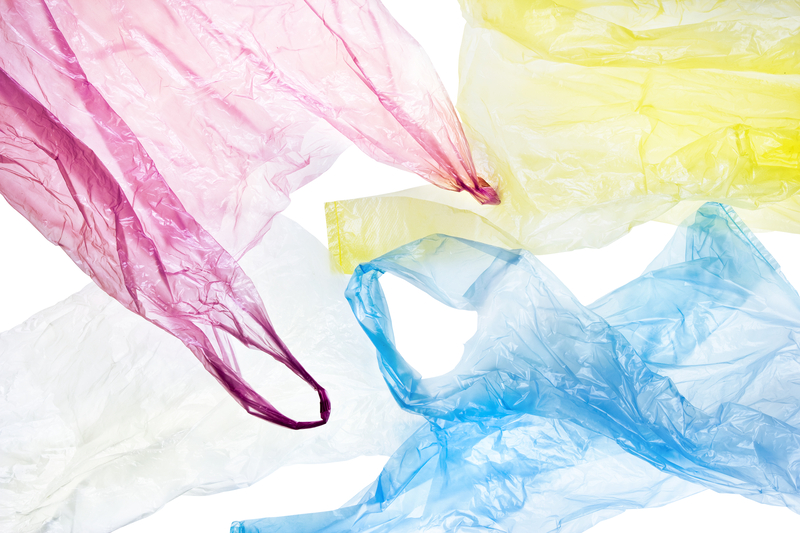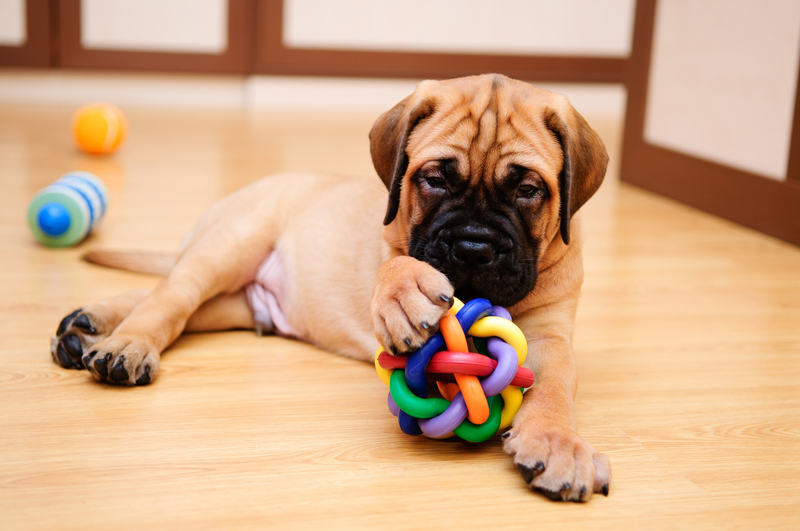Don't Toss That Pan Yet: Disposal and Recycling Hacks
Every kitchen builds up a collection of old cookware, from warped frying pans to scratched nonstick skillets or rusty baking sheets. When your pans pass their prime, it might be tempting to simply throw them in the trash. Wait! There are smarter, more sustainable ways to say goodbye to your old cookware. This comprehensive guide dives into environmentally friendly options for pan disposal and creative recycling hacks to give your well-loved pans new life.

Why Cookware Disposal Matters
Did you know that millions of pots and pans end up in landfills each year? Most cookware is made from metals or composite materials that can have a big environmental footprint. Disposing of your old pans carelessly not only wastes valuable resources but also contributes to landfill overflow and environmental pollution. Sustainable cookware recycling isn't just about tidiness--it's about protecting our planet for future generations.
Environmental Impacts of Unwanted Pans
- Metal pollution: Most cookware contains aluminum, stainless steel or copper that can leach into soil and groundwater if left to degrade in landfills.
- Nonstick coatings: Pans with Teflon or other nonstick coatings contain chemicals that can break down and become environmental pollutants.
- Excessive waste: Kitchenware is rarely biodegradable, leading to a long legacy in landfill sites.
How to Dispose of Old Cookware Responsibly
If you're wondering, "How do I get rid of old pans responsibly?", you have several options that are both eco-friendly and convenient.
1. Check for Local Scrap Metal Recycling Programs
Most metal pans--such as cast iron, stainless steel, and aluminum--are recyclable as scrap metal.
- Find a scrap yard or recycling facility that accepts household metals. Many municipal centers accept old pans in their scrap metal bins.
- Remove non-metal parts: Handles made from plastic or wood should be detached before recycling.
- Tip: Not all facilities accept nonstick cookware, so always check their guidelines first.
2. Donate Usable Cookware
If your pans are still in usable condition (no severe scratches, deep rust, or dents), consider donating them:
- Charity shops (like Goodwill or Salvation Army)
- Soup kitchens, churches, and shelters
- Local freecycle groups or neighborhood sharing programs
Donation is one of the most sustainable ways to dispose of old cookware since it gives your pans a second life in a new kitchen.
3. Take Advantage of Manufacturer Take-Back Programs
Some cookware manufacturers offer take-back programs or recycling initiatives.
- Brands like Calphalon, GreenPan, and others periodically run recycling drives.
- Check the brand's website or contact their customer service for recycling instructions.
4. Use Specialized Recycling Services
There are online services and mail-in programs that accept old pots and pans, ensuring responsible recycling. Look into:
- Terracycle
- Earth911's recycling locator
Fact: Specialized recyclers often ensure even nonstick pans are processed safely.
Creative Pan Recycling Hacks: Upcycling That Old Cookware
Before you toss that old pan in the bin, consider the endless possibilities for DIY cookware upcycling. Below are several inventive hacks to breathe new life into worn-out pots and pans:
1. Turn Your Old Pans into Wall Art
Old pans--especially those with unique patinas or shapes--can make stunning decorative wall pieces.
- Arrange pans of varying sizes for a retro kitchen gallery wall.
- Paint or stencil pans for a pop of color and personal flair.
Pro Tip: Use a heavy-duty adhesive or secure wall hooks for stability.
2. Kitchen Organizers and Storage Solutions
Repurpose shallow pots or frying pans as creative storage:
- Magnetic spice racks: Mount the bottom of metal pans to hold magnetized spice containers.
- Utensil holders: Deep pans can corral spatulas and wooden spoons.
- Fruit baskets: Hanging pans with decorative linings double as rustic fruit holders.
3. Craft Unique Planters
Metal and ceramic pans make excellent planters for succulents or herbs. Their depth is ideal for root systems, and their rustic look fits any garden aesthetic.
- Drill drainage holes at the bottom for healthy plant growth.
- Paint or decorate the exterior to match your gardening decor.
4. Upcycling for Animal Welfare
Your old baking trays and casserole dishes can benefit animal shelters:
- Donate pans for use as feeding dishes or water bowls for shelter animals.
- Old pans make durable litter box mats or small animal habitats for rescues.
This not only extends the life of your cookware but also helps animals in need.
5. Outdoor and Workshop Uses
- Oil drip pans: Place old baking sheets below cars or bikes in the garage to catch drips.
- Paint trays: Use as disposable containers for paint or crafts.
- Smoker and Fire Pit Accessories: Cast iron or steel pans can be repurposed as durable accessories for your grill or backyard fire pit.
How Different Types of Pans Can Be Disposed or Recycled
Not all pans are created equal. The disposal options for old cookware can vary depending on their material. Here's how to handle each type:
Cast Iron Pans
- Highly recyclable: Scrap metal yards will usually accept them--just remove non-metal parts.
- Repair rather than toss! Cast iron can usually be restored with proper cleaning and seasoning, even if rusty.
Stainless Steel and Aluminum Pans
- Scrap metal facilities readily accept these, unless they have nonstick coatings.
- Donation or freecycling is also a great route if pans are still in good shape.
Nonstick (Teflon) Pans
- Most curbside recycling programs don't accept nonstick cookware.
- Look for specialized recycling programs or manufacturer take-back services.
- Never burn or incinerate Teflon pans, as this releases toxic fumes.
Ceramic and Enamel-Coated Pans
- These are often best for upcycling--turn them into art, planters, or storage.
- Some recycling centers accept broken ceramics, but check local guidelines.
When Should You Retire a Pan?
Not sure if it's time to part with your favorite pan? Here are some signs:
- Warped or uneven bottom that causes poor heating
- Cracks or chips in ceramic or glass cookware
- Severely scratched or peeling nonstick coating
- Excessive rust that won't come off cast iron, even after scrubbing and seasoning
- Broken or loose handles that can't be fixed
In most cases, if a pan can be safely repaired, consider fixing it before recycling--you'll save money and reduce waste!
Frequently Asked Questions About Pan Recycling
Can You Put Old Pans in the Recycling Bin?
Standard curbside recycling usually doesn't accept old cookware. Most programs are designed for aluminum cans, not complex or coated metals. However, scrap metal yards or special recycling centers are your best bet.
What Should I Do Before I Recycle an Old Pan?
- Remove all non-metal parts: handles, rubber grips, or attached plastic.
- Clean the pan: Remove food residue and oil so it's ready for recycling.
- Sort by material: Group together aluminum, stainless steel, or cast iron pans for easier processing.
Are Pans with Nonstick Coatings Recyclable?
Nonstick coatings can be challenging for recyclers because of their chemical makeup. Always check with local centers before recycling. If no recycling options exist, explore ways to repurpose or upcycle them.
Can Old Pans Be Donated?
Yes--if they're still in functional condition. Consult local charities or shelters. Even with moderate cosmetic wear, pans can still serve a purpose in a new home.

Best Practices for Extending the Life of Your Cookware
The most sustainable pan is the one you already own. Here's how to maximize your cookware's lifespan:
Proper Cleaning and Maintenance
- Cast iron: Season regularly; avoid soaking and harsh detergents.
- Stainless steel: Clean thoroughly after each use; don't let acidic food residues sit.
- Nonstick pans: Use wood or silicone utensils; avoid high heat.
Timely Repairs
- Tighten loose handles and replace screws when necessary.
- Patch minor chips or cracks with food-safe epoxy (for ceramic pans).
Smart Usage
- Avoid metal utensils on delicate surfaces to prevent scratching.
- Store cookware carefully to prevent dings and warping.
Conclusion: Rethink, Recycle, and Repurpose
Disposing of old pans shouldn't mean tossing them straight into the trash. From scrap metal recycling to creative DIY upcycling, there are green and imaginative ways to handle your retired cookware. By adopting these disposal and recycling hacks, you not only help the earth but might also find a new project or help someone in need.
Ready to upgrade your kitchen? Remember, the end of a pan's cooking life doesn't have to mean the end of its usefulness. Whether you're recycling, donating, or upcycling, every step toward responsible cookware disposal helps build a more sustainable future.
Don't toss that pan yet--discover the recyclers, charities, and DIY crafts that can turn your kitchen clutter into something beautiful and practical!
